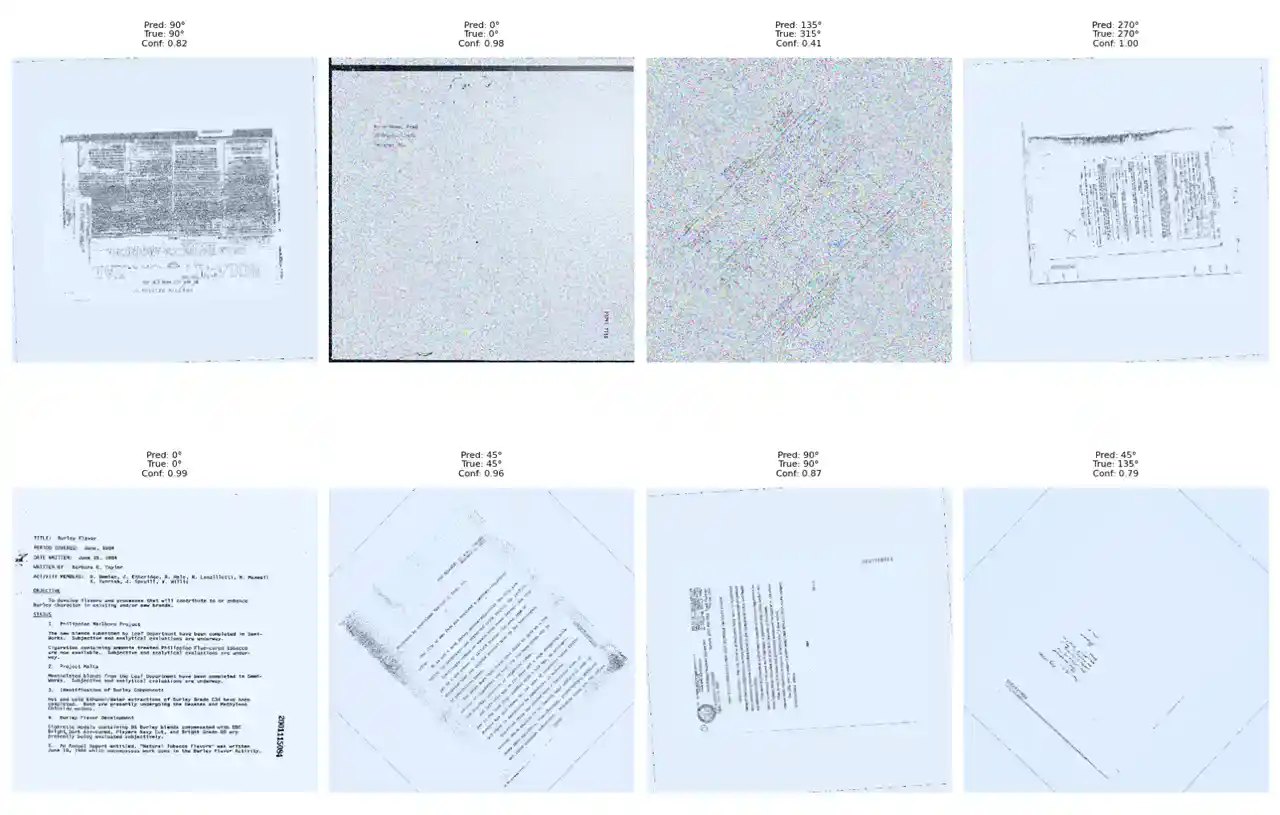This project started as a missing piece in our OCR pipeline at work—documents were coming in at all sorts of crazy angles! I took on the challenge of building a model to automatically detect and correct document orientation, creating a robust system that could handle 8 different rotation classes (0° to 315° in 45° increments) efficiently. Rather than go with a massive model, I focused on efficiency and landed on MobileNetV3-small as the backbone, then enhanced it with two key architectural innovations that made all the difference.
The Architecture: Small but Mighty
The foundation was MobileNetV3-small—perfect for production deployment, lightweight enough for mobile devices but powerful enough for accurate predictions. The first enhancement was CoordConv (Coordinate Convolutions), my first deep dive into this technique that adds coordinate channels to the input, essentially giving the network a "GPS system" for understanding spatial position.
Traditional convolutions are translation-invariant, which sounds good but can be problematic for rotation detection where absolute position matters—CoordConv helps distinguish between a rotated page with text in the top-left versus bottom-right.
Attention and Training Strategy
The second key addition was CBAM (Convolutional Block Attention Module), which applies attention along both spatial and channel dimensions. This dual-attention mechanism works beautifully:
- Channel attention identifies which features are most important (text vs. background)
- Spatial attention pinpoints where those features are most relevant
Training data came from three diverse sources to ensure broad applicability:
- RVL-CDIP for real-world government and corporate documents
- PubLayNet for academic papers with different layouts
- MIDV-500 for identity documents with structured layouts
This diversity was crucial since documents in the wild vary dramatically in layout, text density, and visual characteristics. The dual-head output architecture predicts both rotation class and confidence score, with the confidence head proving invaluable for production deployment—knowing when the model is uncertain allows for human fallback.
Production Impact
In our OCR pipeline, document rotation was a silent killer—slightly rotated documents would produce garbled text extraction, requiring manual intervention. This model automated the correction step, dramatically improving downstream OCR accuracy.
The 8-class approach struck the right balance between precision and practical utility, and while arbitrary angle detection would be more elegant, most real-world document rotation falls into these discrete categories. The project perfectly captures what I love about applied machine learning: starting with a real-world problem, diving deep into technical solutions like CoordConv and CBAM, and ending up with something that actually makes a difference in production systems.
